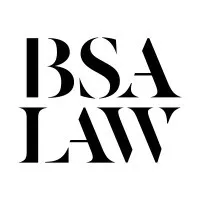- within Privacy, Media, Telecoms, IT, Entertainment and Real Estate and Construction topic(s)
LNB News 07/06/2018 79
Published Date
7 June 2018
Jurisdiction
United Arab Emirates
Related Legislation
Article 59 of Cabinet Decision No. 52/2017; Federal Decree-Law No. 8/2017
Relevant Companies
BSA Ahmad Bin Hezeem & Associates LLP
Abstract
After 100 days in effect, people and companies alike seem to be coming to terms with the payment of Value Added Tax (VAT). There is one area though where there still seems to be some confusion and that is with Tax Invoices issued by retailers which are more commonly known as Till Slips.
Analysis
What are Till Slips
Retailers are under an obligation, when they are registered for VAT to ensure that their Tax Invoices are compliant with UAE Federal Decree-Law No. 8/2017 on Value Added Tax (the VAT law) and Cabinet Decision No. 52/2017 on the Executive Regulations of the Federal Decree-Law No. 8/2017 on Value Added Tax (the Regulations).
Article 59 of the Regulations defines Tax Invoices and what information they must contain, but before getting into the technicalities, it is first worth noting that there are two types of Tax Invoices, namely, a simplified Tax Invoice and a standard Tax Invoice, as described below:
- When a purchase is for less than AED10,000, simplified Tax Invoices may be issued; and
- When a purchase is for over AED10,000, a standard Tax Invoice must be issued by the retailer.
A Till Slip essentially a simplified Tax Invoice and the fact you are buying bread and milk or diamond jewelry makes no difference, as long as the purchase is for a value under AED10,000, the buyer is entitled to receive a Till Slip, whatever your purchase is.
Simplified Tax Invoices
A simplified Tax Invoice (a Till Slip) must contain the following information:
- The words Tax Invoice clearly displayed
- The name, address, and Tax Registration Number (TRN) of the retailer;
- The date of issue;
- A description of the goods or services supplied; and
- The total purchase price and the VAT charged.
Standard Tax Invoices
A standard Tax Invoice must contain the following information:
- The words Tax Invoice clearly displaced;
- The name, address, and Tax Registration Number of the retailer;
- The name, address, of the recipient, and Tax Registration Number of the recipient where the recipient is also registered for VAT;
- A sequential Tax Invoice number or a unique number which enables identification of the Tax Invoice;
- The date of issue;
- The date of the purchase, if different from the date the Tax Invoice was issued; A description of the goods or services supplied;
- For each goods or service supplied, the unit price, the quantity or volume supplied, the rate of VAT (ie standard at 5% or zero-rated);
- The amount of any discount offered;
- The total amount payable under the Tax Invoice expressed in AED;
- The VAT amount payable expressed in AED together with the rate of exchange applied where the currency is converted from a currency other than the UAE dirham; and
Where the invoice relates to a supply under which the recipient of the goods or the services is required to account for VAT, a statement that the recipient is required to account for VAT, and a reference to the relevant provision of the Decree-Law relating thereto.
Till Slips vs Tax Invoices
As can be clearly seen, a simplified Tax Invoice is just that, simplified. It is specifically intended for use by retailers where the purchase value is low, such as groceries or something small as opposed to when there is more money involved and amounts payable to the Federal Tax Authority (FTA) are of greater value, and as such, large amounts require more control and specific details, hence the standard Invoice is a lot more complex. Larger amounts of money also tend to accompany a more complex transaction where the delivery date may differ to the date of issuing the invoice and may have a more aspects to take into consideration. It would further be a burden to have all the required information for a simple low value transaction on a standard Tax Invoice where it is simply a case of taking a product or products from the shelf and paying for them there and then such as purchasing bread and milk.
The FTA are further encouraging people to insist on Till Slips when purchasing goods. Again, this is an added form of control to ensure that the retailer is complying with the VAT Law and the Regulations. If a retailer is not complying with the relevant laws and regulations, it becomes easier for the retailer to evade the payment of VAT to the FTA. Some smaller stores who may not be certain how VAT works or may just be trying to earn more money, may try and charge VAT on items although they are not registered for VAT. By asking for a Till Slip and ensuring that it complies with the requirements, most importantly that it has a TRN, then you can simply log onto the FTA website and verify if that TRN does indeed belong to the retailer in question. If it doesn't, then the retailer is clearly committing fraud and can be reported to the FTA to take the necessary action. By asking for the Till Slip you can further ensure that the retailer has not simply increased its prices randomly and is legitimately charging VAT. Some retailers seemed to have increased prices by say a dirham when the product was five dirhams and this was justified by the retailers by stating that the increase was due to and to cover VAT. The FTA has taken a harsh stance to this type of behavior as that is not the intention of VAT. Retailers are not to profit from VAT as it is a consumer Tax and the retailer must keep the reasonable market price and simply add the applicable VAT to the item which they will then pay over to the FTA.
Pricing as VAT Inclusive
Regarding the on-shelf prices of items, it is not sufficient for a retailer to have the VAT exclusive amount advertised and then merely have the store add the VAT at the till point so that it appears on the till slip. In terms of the VAT Law and the Regulations, the advertised price of a product is deemed to be inclusive of VAT. As such, should one go to the local store and a product is AED1,000,00 then it is illegal for the store to charge you VAT over and above that price and in this case charge AED1,050.00. That AED 1,000,00 is deemed to include VAT so that the actual price exclusive of VAT would amount to AED 952.38 with VAT amounting to AED 47.62 bringing the total for the product to AED 1,000,00. Should a store charge a consumer VAT over and above the advertised sale price, then you are entitled to insist on paying the advertised price and refuse to pay any VAT additional thereto.
Hopefully you now have a better understanding of Till Slips and TRNs and what are required by all retailers and vendors when issuing Till Slips.
The content of this article is intended to provide a general guide to the subject matter. Specialist advice should be sought about your specific circumstances.



